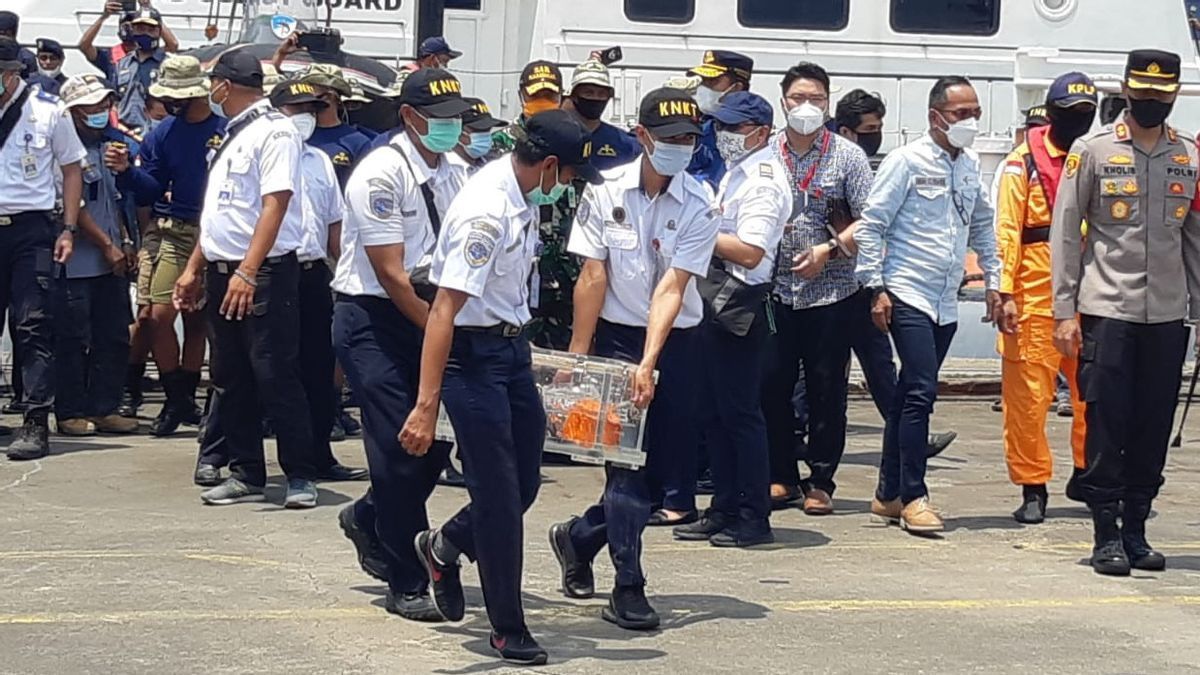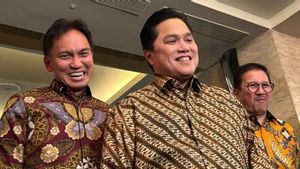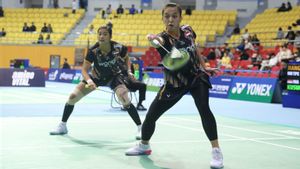JAKARTA - The National Transportation Safety Committee (NTSC) revealed the results of their investigation of the Sriwijaya Air SJ 182 plane crash that crashed in the waters of the Thousand Islands on January 9, 2021.
As a result, the NTSC assessed that the safety measures taken by several parties were in accordance with flight safety and security guidelines. However, there is a difference between the assumption of the pilot and the attitude of the Sriwijaya Air SJ 182 aircraft which cannot be monitored so that the plane with the Jakarta-Pontianak route crashed in the Thousand Islands region. Chairman of the Aviation Investigation Subcommittee, Capt. Nurcahyo Utomo, explained that the KNKT investigation had followed the rules of Law Number 1 of 2009 concerning Aviation that the purpose of the investigation was to reveal the cause and avoid accidents with the same cause. The KNKT investigation has also followed the national standards set out in the ICAO (International Civil Aviation Organization) Annex 13, which involved several related countries in the investigation team. Among other things, aircraft design countries, namely the United States, represented by the NTSB, assisted by the FAA, Boeing, and General Electric as engine manufacturers. The investigation was also assisted by TSIB, from Singapore regarding the ASEAN MoU which will help each other if the state is carrying out investigative duties. "Then the NTSC was also assisted by the UK regarding the components examined, so that Britain has the right to be involved in the investigation," said Capt. Nurcahyo in his presentation at the DPR Commission V meeting room, Thursday, November 3. As is known, the Sriwijaya SJ 182 aircraft with the Boeing 737 departed Jakarta, Soekarno-Hatta Airport, to Supadio Airport, Pontianak, took off at 14:36 WIB. After flying 13 minutes the plane crashed and the flight ended in the Thousand Islands about 11 miles from Soekarno-Hatta Airport. All passengers and crew were declared dead. Capt. Nurcahyo said the plane has an autopilot that, if it doesn't go according to plan, the autopilot can be set using control panel mode, which can regulate speed, altitude, speed of increase and others. "As a result, we see that during climate, there was a change in autopilot mode, which previously used flight management computer, moved using control panel mode, this change seems to require less engine power," explained Nurcahyo.
If you need less energy, Nurcahyo continued, normally the auto-throttle will use a backward thrust lever to reduce engine power. However, in this flight, it turns out that auto-throtel cannot move the right thrust lever. "So the left thrust lever continues to move while the right thrust leak doesn't move. "We have examined 7 computer components that we examined, some of which are in the US, and some are in the UK and auto-throttle components, so we believe that this interference from the right thrust leak is a mechanical interference, not the computer system," explained Nurcahyo. Then the reduction in right thrust lease, causing the right engine to not decrease. So make the left thrust lease reduce engine power to compensate engine power according to autopilot. Finally there are differences left and right (assymetry). "Due to the tight flight and the same number of destination schedules to Pontianak, the SJ 182 flight was asked by traffic controllers to stop at an altitude of 11,000 feet. Towards 11 thousand feet, engine power is decreasing because it has reached the ordered height. "Because the right level thrust does not move, the left thrust leak continues to reduce its energy so that the difference in the left right engine is getting bigger," said Nurcahyo. Nurcahyo said that the plane had actually been equipped with a Cruise Thrust Split Monitor (CTSM) which functioned to disable the auto thrust if there was a difference in the ASSymetry. Deactivation occurs if the flight spoiler opens more than 2.5 degrees for 1.5 seconds. "However, at 14:39 WIB when the plane turns right the auto thruster remains active. "Only at 14:40 auto thrusters were turned off, resulting in delays and the first time it was risking," he explained. "The plane then turned to the left which had turned to the right. During the flight, changes changed in the cockpit, including thrust leak changes and machine indicators. Then the change in the attitude of the plane that had turned to the right became flat then turned left. "This change was not realized by the pilot, we found from the cockpit voice recorder that the captain's voice was not recorded." "We can't determine why the captain's voice was not recorded but there are allegations that the captain is not using a headset," he continued. Then, said Nurcahyo, there is a microphone that is expected to record anything in the cockpit, but it turns out that the channel is closed to noise. So the conversation can't be recorded. "So we can't analyze the cooperation in the cockpit. We assume the pilot believes in automation in the plane. If it is set in a certain direction, the autopilot will set according to what has been set and the auto thrust will perform according to the request of the autopilot. "So this condition has an impact on reducing the monitor and conditions that occur," said Nurcahyo. In the plane's condition tilted to the right and turned left there was a warning that the plane was tilted excessively by more than 35 degrees. The plane tilted to the right, said Nurcahyo, may have made the pilot assumption that the plane was turning too far to the right, but what actually happened was the plane turning too far to the left. "So the difference in assumptions resulted in the pilot's recovery efforts not being appropriate. Flight data recorder noted that the pilot's 4 seconds of recovery were turning the plane to the left while the plane was over to the left," concluded Nurcahyo.
The English, Chinese, Japanese, Arabic, and French versions are automatically generated by the AI. So there may still be inaccuracies in translating, please always see Indonesian as our main language. (system supported by DigitalSiber.id)








